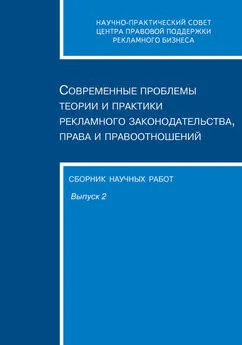Сборник статей - Революции в России. Теория и практика социальных преобразований
- Название:Революции в России. Теория и практика социальных преобразований
- Автор:
- Жанр:
- Издательство:неизвестно
- Год:неизвестен
- ISBN:978-5-4263-0679-0
- Рейтинг:
- Избранное:Добавить в избранное
-
Отзывы:
-
Ваша оценка:
Сборник статей - Революции в России. Теория и практика социальных преобразований краткое содержание
Сборник издан при финансовой поддержке Фонда «История Отечества».
Революции в России. Теория и практика социальных преобразований - читать онлайн бесплатно ознакомительный отрывок
Интервал:
Закладка:
Революции в России: Теория и практика социальных преобразований Cборник статей по итогам Международной научной конференции (7–8 ноября 2017 г., Московский педагогический государственный университет, г. Москва)
Концепция истории, революция и образы будущего
Ленин о социализме
Крауш Т.
Аннотация.В статье предлагается оригинальный анализ творческого наследия лидера большевистской партии и Советской России В.И. Ленина. Статья акцентирует внимание на вопросах особенно актуальных как в исторической ретроспективе, так и в контексте современного положения в мире. Череда экономических и политических кризисов поставили проблему выбора антикризисных механизмов и альтернативных путей развития человечества. В статье показано, как подобного рода проблемы решались Лениным в условиях Революции 1917 г. и постреволюционного развития. Автор показывает нестандартность и творческий характер ленинских подходов к самым неоднозначным задачам, возникавшим перед советским руководством в условиях Гражданской войны, военного коммунизма и нэпа. Успешность ленинской политики предопределялась тем, что, сохраняя верность основным принципам марксистского учения, Ленин максимально адекватно учитывал характер момента, те изменения, которые происходили в советском обществе. Помимо творческого, динамичного ленинского подхода к решению политических задач, актуальность сохраняет и предложенная Лениным альтернатива капиталистической и авторитарной модели социального устройства, которую он видел в социализме.
Ключевые слова:В.И. Ленин, Октябрьская революция, военный коммунизм, НЭП, государственный капитализм, диктатура пролетариата, переходный период, социализм.
LENIN ON SOCIALISM
Krausz T.
Abstract.The article offers an original analysis of the creative legacy of the leader of the Bolshevik Party and Soviet Russia V.I. Lenin. The article focuses on issues that are especially relevant both in historical retrospect and in the context of the current situation in the world. The series of economic and political crises posed the problem of choosing anti-crisis mechanisms and alternative ways of human development. The article shows how such problems were solved by Lenin in the conditions of the Revolution of 1917 and post-revolutionary development. The author shows the non-standard and creative character of Lenin's approaches to the most ambiguous tasks that arose before the Soviet leadership in the conditions of the Civil War, War Communism and NEP. The success of Lenin's policy was predetermined by the fact that, while maintaining fidelity to the basic principles of Marxist teaching, Lenin most adequately took into account the nature of the moment, those changes that occurred in Soviet society. In addition to the creative, dynamic Leninist approach to solving political problems, the alternative offered by Lenin to the capitalist and authoritarian model of social order that Lenin saw in socialism, is still essential.
Key words:V.I. Lenin, the October Revolution, War Communism, NEP, Dictatorship of the Proletariat, transition period, socialism.
Lenin outlined the whole problem of socialism through the historical development of relations of property and production, according to which the new socialist “communal society” appears in modern history after the dissolution of the ancient communities including of Russia. 1 1 See: Krausz T. Lenin on global history and the global historiography on Lenin. Lecture on the Fifth European Congress on World and Global History (Europen Congress European Network in Universal and Global History (ENIUGH)). 31 August 2017, Corvinus University, Budapest.
It was a higher form of communal ownership, direct control over workplace through the soviets of workers (historical ancestor: Paris commune 1871).
When Lenin posited his own “three-step” concept in his State and Revolution – in which socialism, as the “lower phase” of communism, is preceded by a “transitional period” – he could not have known that the Russian Revolution would be left isolated. As a result, Soviet development has different periods on economic and political criterias. The three phases following the October Revolution – the “market economy” that characterized the period until spring 1918, the war communism of 1918–1920, and the “state capitalism” of the New Economic Policy (NEP) from March 1921 onward – left substantive and easily outlined theoretical traces in Lenin’s thought.
When Lenin posited his own “three-step” concept in his State and Revolution – in which socialism, as the “lower phase” of communism, is preceded by a “transitional period” – he could not have known that the Russian Revolution would be left on its own. As a result, theoretical socialism as a practical issue would be put off in perpetuity and history would actuate the possibility of socialism in peculiarly Russian form, something he would very much have wanted to avoid.
Central to Lenin’s thinking after October 1917 was how to preserve the hard-won strength: the power of the soviets. In practice this was never separate from the power of his party, which saw it as the political condition upon which continuing soviet power depended. He surveyed the practical possibility of communal-socialist proletarian ends from this point of view. The contradiction, which strained the tortuous daily battles for survival and the end objectives, increasingly set the discrete problems of the so-called transitional period in the forefront. Such was the mass of problems he confronted at the first congress following October. There, he drew attention to the particularity of their revolution, “The situation is misrepresented to make believe that some want to ’introduce’ socialism in Russia by decree, without considering the existing technical level, the great number of small undertakings, or the habits and wishes of the majority of the population.”
In his pamphlet, The Immediate Tasks of the Soviet Government, published on 28 April 1918, Lenin once again raised these same questions, and gradually formed his own position in light of the new situation. The reason he attributed such grave importance to the difficulties caused by the “chaotic” situation was that “the military party, tempted by Russia’s momentary weakness … may gain the upper hand at any moment” in the West. 2 2 Lenin Collected Works (LCW). Vol. 27. P. 237.
He intended to establish a concrete economic alternative to market-dominated production in an “anarchically built capitalist society” and the “spontaneously growing and expanding national and international market” system, 3 3 Ibid. P. 238.
but which had not yet overstepped the limitations of the existing “mixed market economy.” True, he had already advocated “the strictest and universal accounting and control of the production and distribution of goods.” Since he spoke about “setting up an extremely intricate and delicate system of new organisational relationships”, whose realization was not merely a technical matter, it is natural that he did not envisage a complete and immediate termination of all market relations as “time is needed” to “convince the people” and “deepen consciousness.” Nevertheless, just such a termination would shortly be implemented under civil war conditions. As the organization of the new method of production and distribution was not proceeding at the required pace and with the expected breadth, Lenin concluded that the capitalist sector would have to remain standing. He said, “If we decided to continue to expropriate capital at the same rate at which we have been doing up to now, we should certainly suffer defeat”, and elsewhere that “the expropriation of the expropriators” is easier than introducing a new system.
He believed that the Red Guard attacks on capital had drawn to a close and the period of “utilising bourgeois specialists by the proletarian state power” had begun. 4 4 Ibid. P. 246, 248.
He even strayed from every theoretical premise and declared unequivocally that these specialists must be engaged in the service of the new regime with “high remuneration”. Lenin described this “winning over the ‘stars’ of the intelligentsia” as a “step back” and a “partial retreat” when compared with socialist equality. 5 5 Ibid. P. 248–250.
In the same breath – and with great prescience – he spoke of a certain and inevitable corruption of this system, the weakening of its moral fiber as a sort of natural concomitant of “market economy”. “The corrupting influence of high salaries – both upon the Soviet authorities (especially since the revolution occurred so rapidly that it was impossible to prevent a certain number of adventurers and rogues from getting into positions of authority…) and upon the mass of the workers – is indisputable.” Yet he never found a convincing solution to this contradiction, always thinking in terms of “socialist” and “proletarian” consciousness, because they had not been able to establish “comprehensive control and accounting,” and had “fallen behind with the socialist reforms.” “We have introduced workers’ control as a law, but this law … is only just beginning to penetrate the minds of broad sections of the proletariat.” 6 6 Lenin Collected Works (LCW). Vol. 27. P. 254.
Essentially, the expansion of state regulation to capitalist production and turnover of goods (to the cooperatives as well) may become a fundamental question regarding financial and market conditions in the “transition leading to socialism”. 7 7 On this, see for example: Dmitrenko V.P. Sovyetskaya ekonomicheskaya politika v pervie godi proletarskoy diktaturi [Soviet economic policy in the first years of the dictatorship of the proletariat]. Moscow: Nauka, 1986. P. 21–29.
A virtually unnoticed shift took place within this political framework toward war-communist restrictions of the market economy. Originally instrumental in defending against foreign capital and establishing independence internally, the state monopoly on grain (introduced by the Provisional Government’s law of 25 March 1917) was followed by plans for both a state monopoly on foreign trade and a property tax, as a way of “supplementing” the budget. 8 8 Production for the market and directly for state requirements raised the issues of disciplined work and remuneration. The Council of Labor Unions introduced strict rules of conduct at state-owned enterprises in April 1918, and after the October Revolution performance-based pay replaced work hours–based pay, meaning that a quarter of the workers at the companies in Petrograd received performance-based pay by July. LCW. Vol. 27. P. 583. See also: Szamuely L. Az első szocialista gazdasági mechanizmusok. Közgazdasági és Jogi Könyvkiadу. Budapest, 1971; Krausz T. Szocializmus-képek a huszas években. Átmeneti korszak és szocializmus // Világosság. 1984. № 4. P. 202–210.
Интервал:
Закладка:










